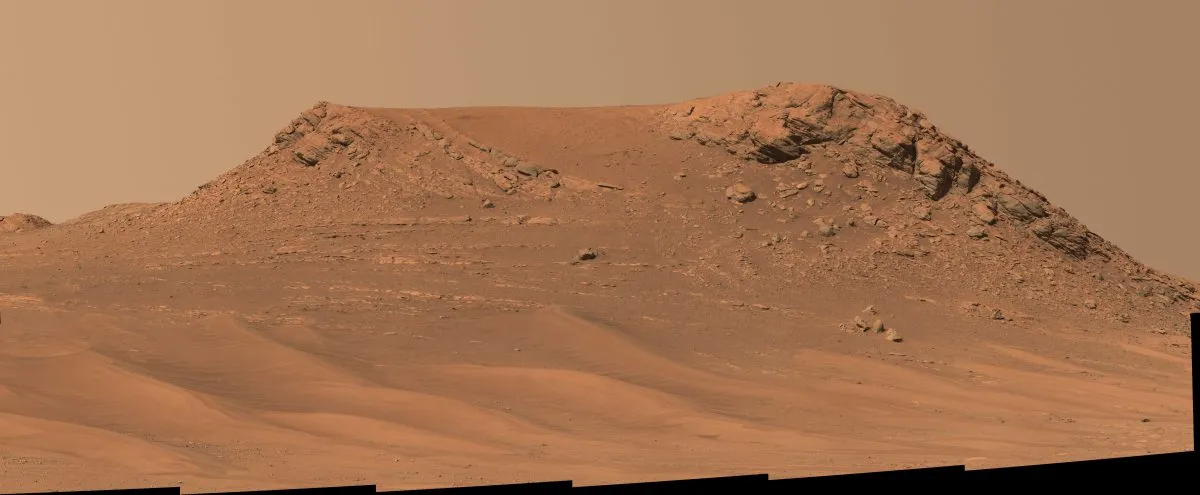Mars has dried up river beds and evidence of ancient lakes, meaning at one stage it must have had liquid water on its surface, so where did all Mars's water go?
Planetary scientists say that over the past 3 billion years, some of Mars's water went underground, but what about the rest of it?
Observations with the Hubble Space Telescope and NASA's MAVEN (Mars Atmosphere and Volatile Evolution) mission are getting scientists closer to the answer.

"There are only two places water can go. It can freeze into the ground, or the water molecule can break into atoms, and the atoms can escape from the top of the atmosphere into space," says John Clarke of the Center for Space Physics at Boston University in Massachusetts, who has led a study into Mars's ancient water loss.
"To understand how much water there was and what happened to it, we need to understand how the atoms escape into space."
The study used data from Hubble and MAVEN to measure how many hydrogen atoms are escaping from Mars into space, and how quickly.
Doing this, they were able to effectively trace the history of Mars's water back through time.

Why Mars loses its water
Mars is a cold, barren place due to its lack of atmosphere, relative to Earth.
Sunlight breaks apart water molecules in the Martian atmosphere into hydrogen and oxygen atoms.
The team measured both hydrogen and deuterium, the latter being a hydrogen atom with a neutron in its nucleus.
Deuterium has twice the mass of hydrogen and escapes into space more slowly than regular hydrogen.
This meant that, over time, more hydrogen was lost on Mars than deuterium, and so more deuterium than hydrogen built up in the atmosphere.
By studying how the atoms currently escape, the team worked out the escape rates over the past 4 billion years to infer how much water was present when Mars was a warm, wet planet in its ancient history.
Study data was gathered by the MAVEN mission, with Hubble filling in the gaps in information caused as deuterium emissions became more faint during Martian winter.

Mars's changing atmosphere
"In recent years scientists have found that Mars has an annual cycle that is much more dynamic than people expected 10 or 15 years ago," says Clarke.
"The whole atmosphere is very turbulent, heating up and cooling down on short timescales, even down to hours. The atmosphere expands and contracts as the brightness of the Sun at Mars varies by 40% over the course of a Martian year."
The data shows that hydrogen and deuterium escape more rapidly when Mars is close to the Sun.
Water molecules rise through the atmosphere at great speed and release atoms at high altitudes.
And the solar wind – a stream of charged particles emanating from the Sun – gives the hydrogen and deuterium atoms an extra boost needed in order for them to escape Mars's gravity.
This helps explain how Mars can lose its water so quickly.

Applications beyond our Solar System
By studying how a planet like Mars could have lost all of its water, astronomers can then use the planet as a proxy for better understanding the evolution of other rocky, Earth-sized planets around stars beyond our Solar System.
Mars, Earth and Venus are all close enough to our Sun for liquid water to pool on their surface, meaning they all sit within what's described as the 'habitable zone' around their host star.
Yet Mars, Earth and Venus are all vastly different: Venus in particular, with its poisonous atmosphere, is not what you might think of as being 'habitable'.
As a result, studying planets like Mars and Venus can help astronomers understand more about habitable zones and rocky planets across the Galaxy.

